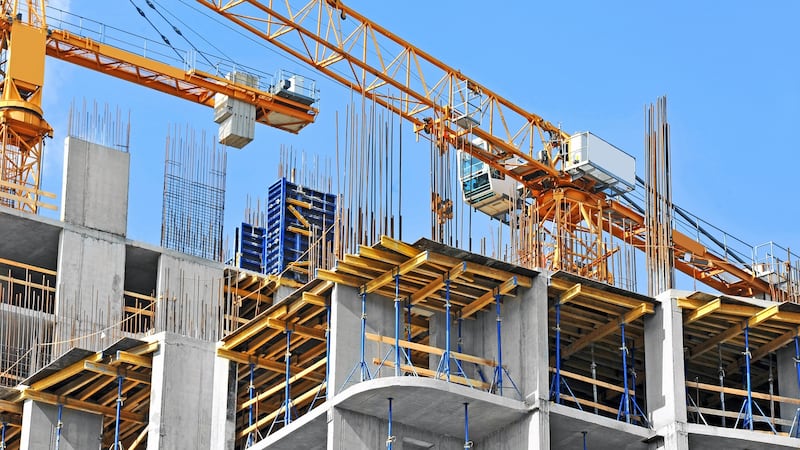Put forward as a niche concept seven years ago to solve a need for rental homes in specific areas of Dublin, the build-to-rent (BTR) sector has mushroomed to the point where it edged out most standard apartment development in the city and it is spreading its spores to the suburbs and beyond.
Recent months have seen a rash of BTR applications. More than 20 per cent of all submissions to An Bord Pleanála for large scale rental-only developments since 2018 have been lodged in the past four months.
They account for about a sixth of all applications made since 2017 under the soon-to-be-axed Strategic Housing Development (SHD) system, where large scale house, apartment, and student accommodation schemes are determined directly by An Bord Pleanála, bypassing the local authority planning system.

In 2015, Dublin City Council introduced the BTR concept as part of preparations for the 2016-2022 development plan, partly to increase rental options but also to get apartment construction, still struggling from the recession, back on track.
Under the scheme, BTR units could include studio apartments, prohibited in standard complexes in the city, but with communal facilities such as common rooms and gyms, to make up for the smaller living spaces. Complexes had to have more than 100 apartments, to ensure sufficient rents to support the communal services, and would be limited to the inner city and the docklands.
By the end of the year, then housing minister Alan Kelly had taken hold of the concept, issuing "guidelines" in relation to BTR developments which all local authorities were required to adopt.
Councils were told to avoid specifying particular locations for BTR projects. Studios were allowed to make up 50 per cent of a scheme as long as it contained at least 50 dwellings and was “within walking distance of centres of employment or on or immediately adjoining major employment sites”.
A subsequent addendum to the guidelines also introduced the concept of “shared living”, which was similar to BTR, but with ensuite rooms only required, rather than apartments and studios.
The following year, Kelly's successor Simon Coveney introduced the SHD system, which saw its first applications in 2017. While large BTR schemes qualified under the system, applications were sluggish.
‘No restrictions on dwelling mix’
It was under the next housing minister, Eoghan Murphy, that BTR really got into its stride. From 2018 onwards, BTR schemes faced "no restrictions on dwelling mix", meaning all could be studio apartments. Minimum size standards were also relaxed. The shared living concept was formalised as "co-living", with its own separate criteria allowing 12sq/m rooms.
Rental-only applications began to come in, but when co-living was axed, one year ago, BTR took off like a rocket.
An analysis by FP Logue Solicitors, specialists in environmental and planning law, found large scale BTR schemes have accounted for about 16 per cent of SHDs – or some 17,000 housing units spread over almost 70 sites. To date, 40 have been granted permission, nine refused, one withdrawn, and at least 16 are still awaiting decisions.
Of those granted permission, half are in Dublin city, 10 in Dún Laoghaire-Rathdown, five in South Dublin, with a scattering of others in Fingal, Cork, Galway and Limerick.
While, as expected, the Dublin City Council area has the lion’s share of BTRs, they are largely not where the council had originally intended them.
The largest BTR scheme granted, one of 1,614 apartments, is on Clonliffe Road in Drumcondra, in a distinctly suburban area. Further out still, BTRs have been approved in Clontarf and Santry. Just one large scale BTR scheme has been granted in the docklands, comprising 702 apartments at Castleforbes off Sherriff Street. A handful of schemes are within the canals, but these are largely in Dublin 8, rather than Dublin 1 or 2.
Strategic Development Regenerations Zones
The city council is now preparing its next development plan and is trying to turn back the clock to 2015 with BTR rules similar to their original intent, but with some additional restrictions. The schemes will again be confined to the inner city, areas of “high intensity employment” and within identified Strategic Development Regenerations Zones.
In a further restriction, no BTR complex will be allowed to be entirely rental-only. Schemes of more than 100 homes will have to have at least 40 per cent of properties available for sale and those homes would have to meet higher apartment size standards. In line with the 2015 rules, BTR schemes of less than 100 homes will generally not be permitted.
City planner John O’Hara says the council is not trying to “sink” the BTR concept, but wants to see them appropriately located. “What we are looking for is a tenure diversity across the spectrum. We are very concerned about the notion that if you have huge build-to-rents at all sites that are available, on average that is okay citywide because there are so many semi-detached three-beds built in the ’60s, ’70s and ’80s,” says O’Hara. “That type of equalisation is not what we are looking for; we need equalisation over a neighbourhood so each neighbourhood has to provide the cross section of social, affordable or build-to-rent.”
Dún Laoghaire-Rathdown and South Dublin local authorities are also preparing their development plans, but have so far elected not to impose significant BTR restrictions.
With the SHD system coming to an end this month, all BTR applications will now have to be made to local authorities. However, while SHDs and co-living have been eradicated, BTR remains the indestructible cockroach of the housing sector.










